Timeline History

I continue to review the old accounting technology. Next in line are the technologies of so-called time-keeping accounting.
Time records - accounting of staff time.
The term comes from the German Tabelle, which in turn originates from the Latin tabula - the table. Why a table? And because the working days or hours of employees of enterprises since ancient times were noted in long paper tables - time sheets .


Report cards filled out, of course, time markers. I remember very well: in the department in which I had once started my career, there was a man who, in addition to his main duties, performed the duties of a time-attendant - daily noted those present and absent from the workplace. At the end of the month, the report card was handed over to the settlement department, where, on the basis of the data indicated in it, employees were charged.
However, some attempts to modernize time-keeping records were made long before I can remember.
Somewhere from the beginning of the last century, large enterprises began to use the so-called service tokens , in the form of numbered metal plaques:

When entering the territory of the enterprise, the employee took off his personal service badge from a special board, and when leaving the territory he hung it back, as a result of which it was easy to establish whether the person was at the enterprise or “went out for a minute”.
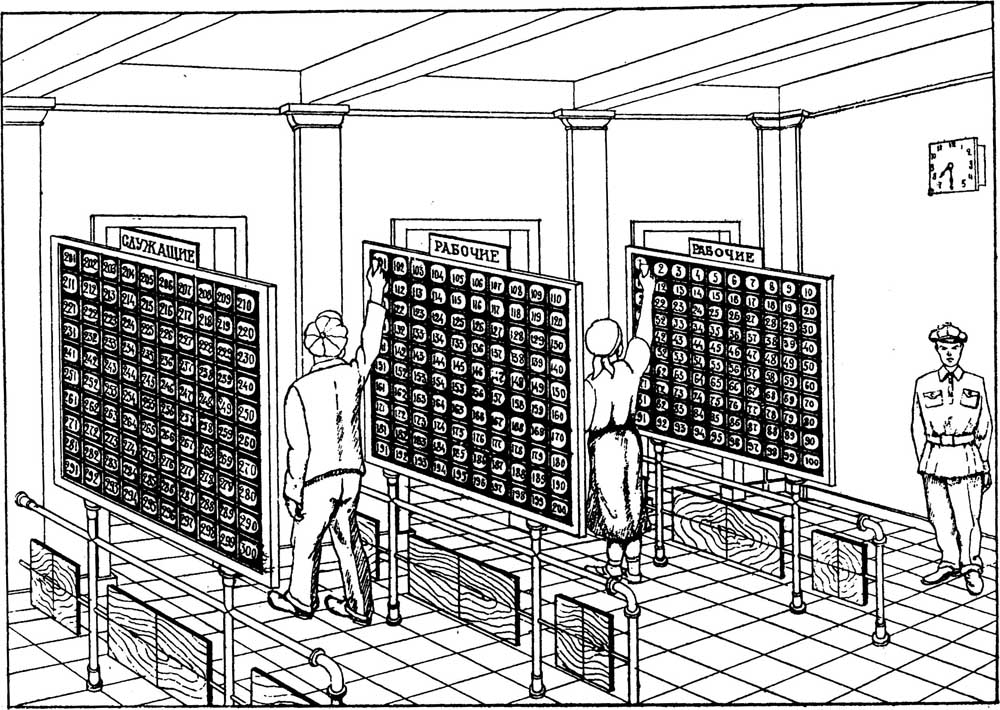
The time boards of different models were used, although - well, what kind of models can a vertical board have with numbered hooks ?!
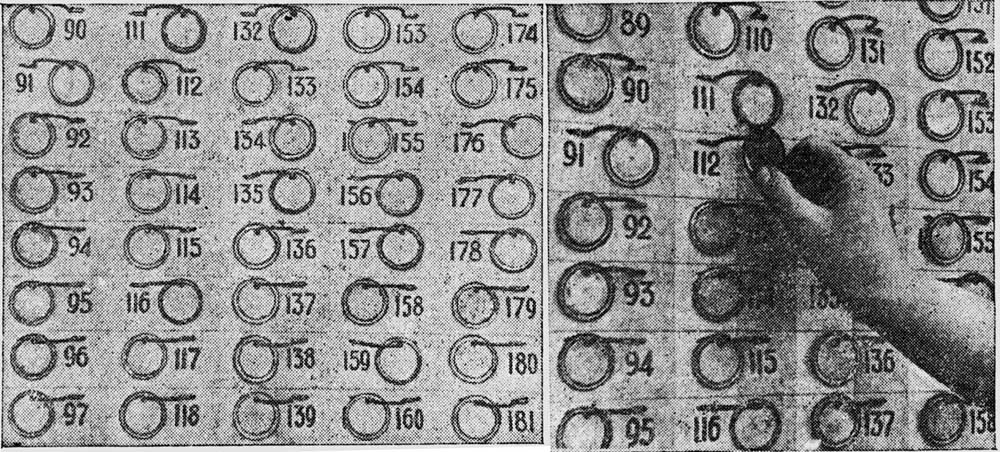

However, there were, there were models, and the designers drew smart schemes of what size the time sheets of the cell and grooves should be.

Exposed time boards at the walkway solved the problem of time records only partially. The data on working hours are required to be submitted to the calculators, and who will do this, is not a watchman ?! The watchmen have enough of their worries. In addition, some of the employees have traveling work; time boards are not applicable to them. It turns out that time sheets do not cancel, but only slightly supplement the functions of traditional time sheets. How to be
Invented the so-called control clock(they were also called chronographs and chronotypes). These devices also exhibited at the entrance. With the help of control hours, employees entering and leaving the enterprise put down marks on time cards specially designed for this purpose. Time was automatically printed on the cards - it was decidedly impossible to agree with the control clock, not to mention a timekeeper or a watchman. Then the cards were handed over to the settlement department for payroll based on the hours worked.
Such an idea, in short.
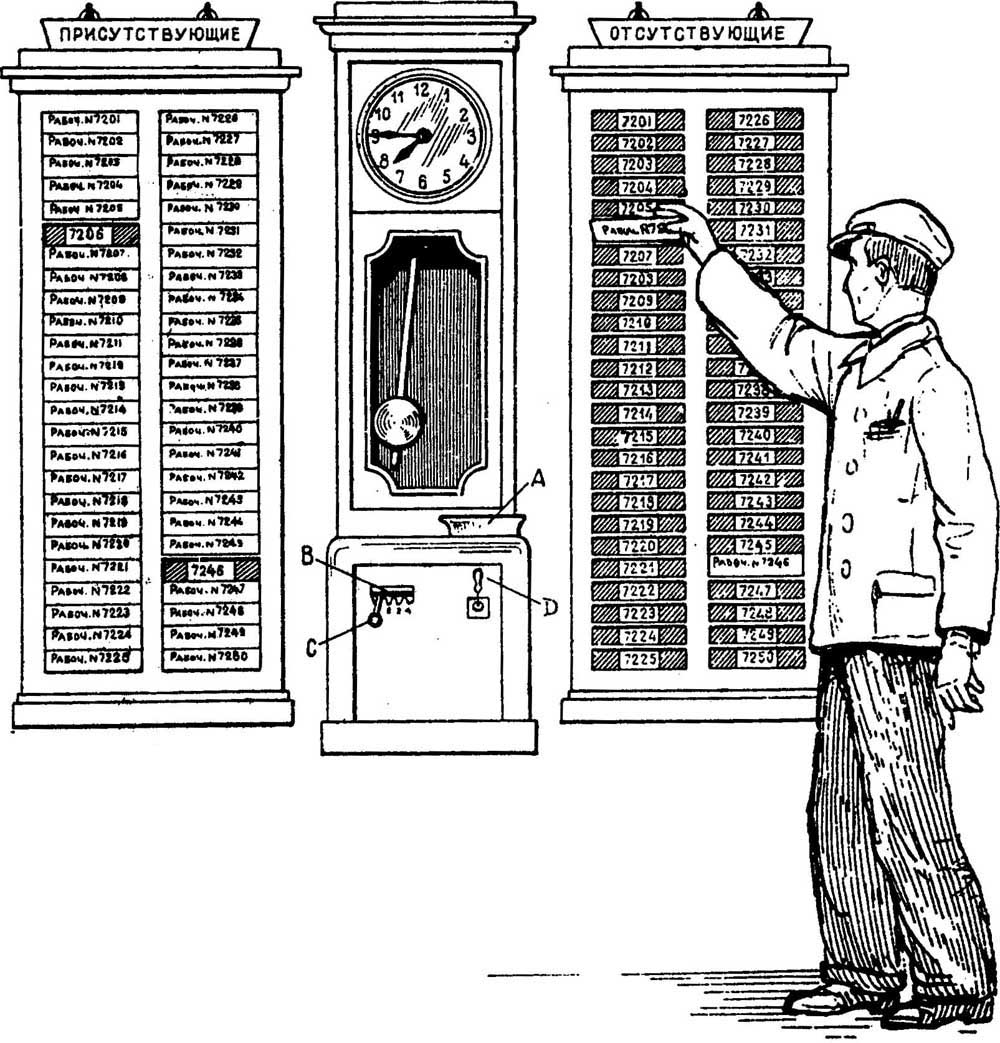

Time cards, abroad and with us in the 1st half of the last century:

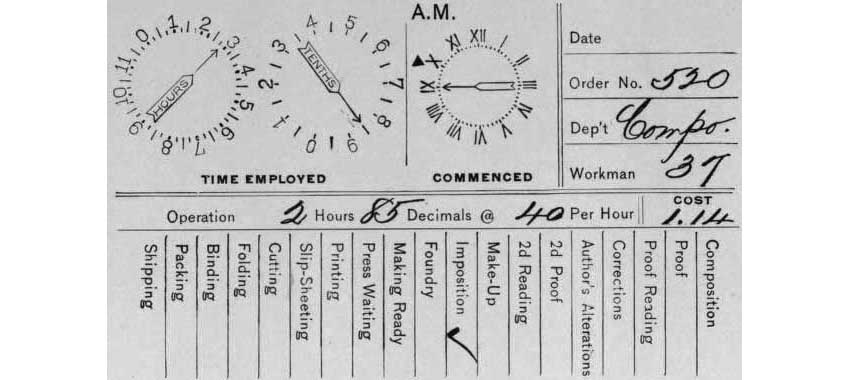
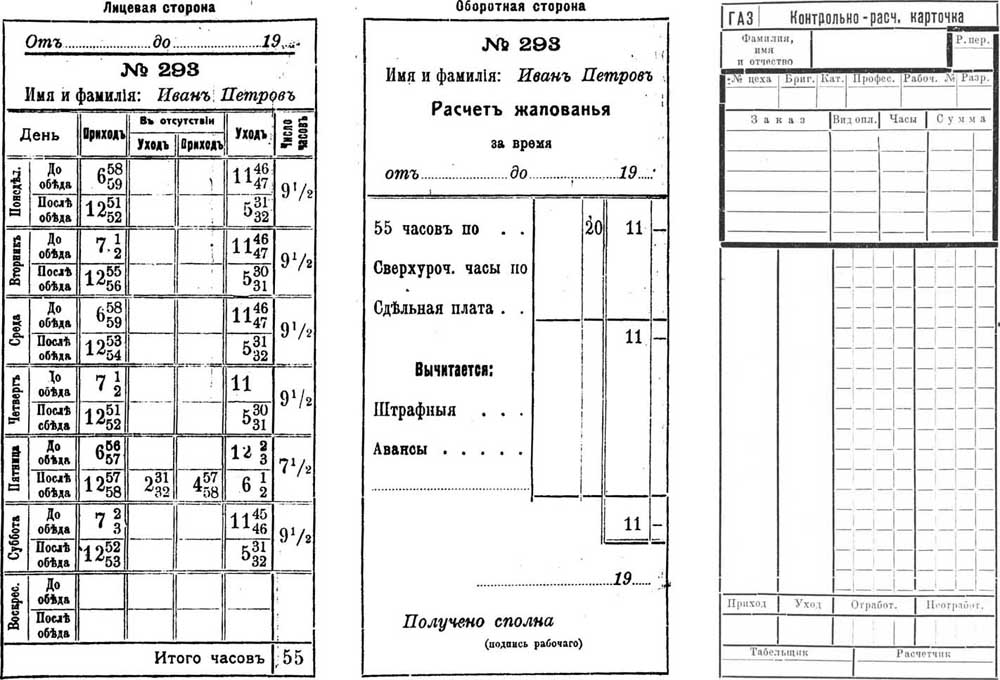
The control clock is not like time sheets, with their use there was a field for inventive activity. Still, the clock is a rather complicated mechanism, and there is still a need to stamp the card, there is something to brainwash a technically gifted person with.
Control watch models in the 1920-30s. a fair amount was made, many were produced on an industrial scale. Here are samples of some of them:
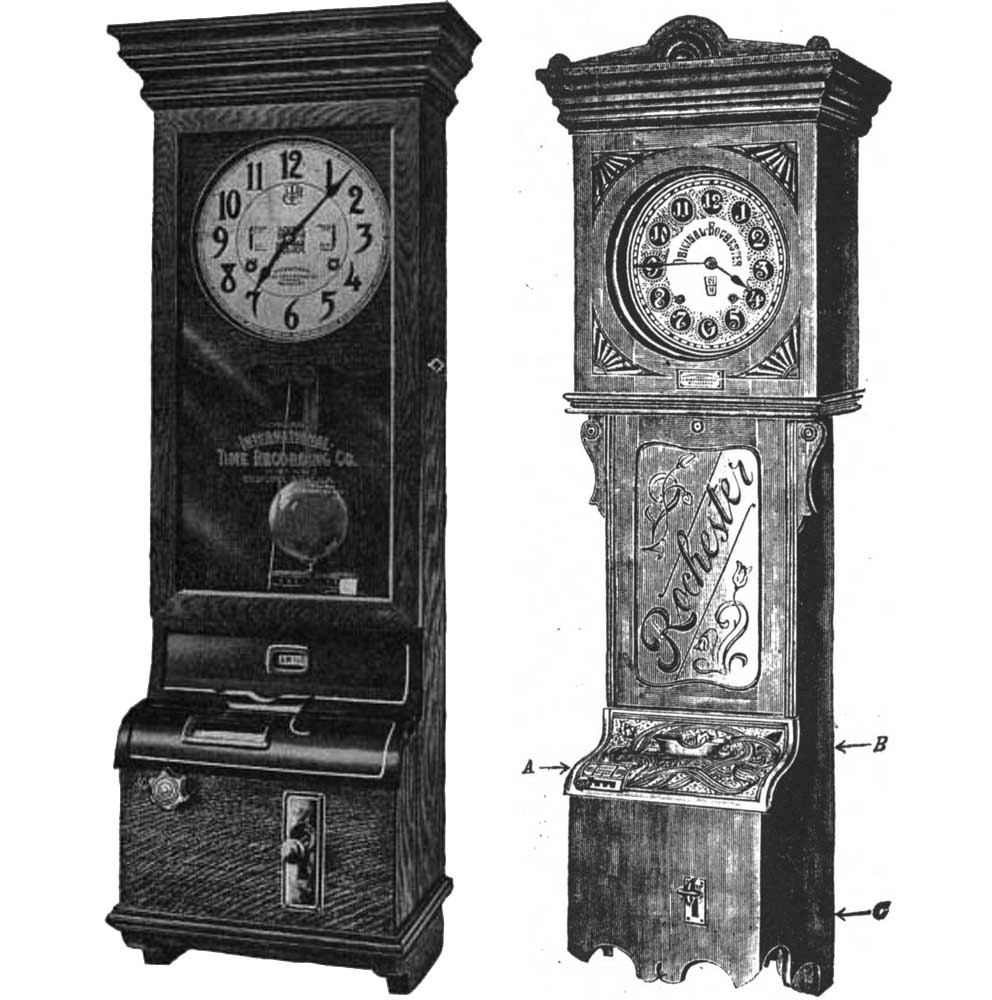



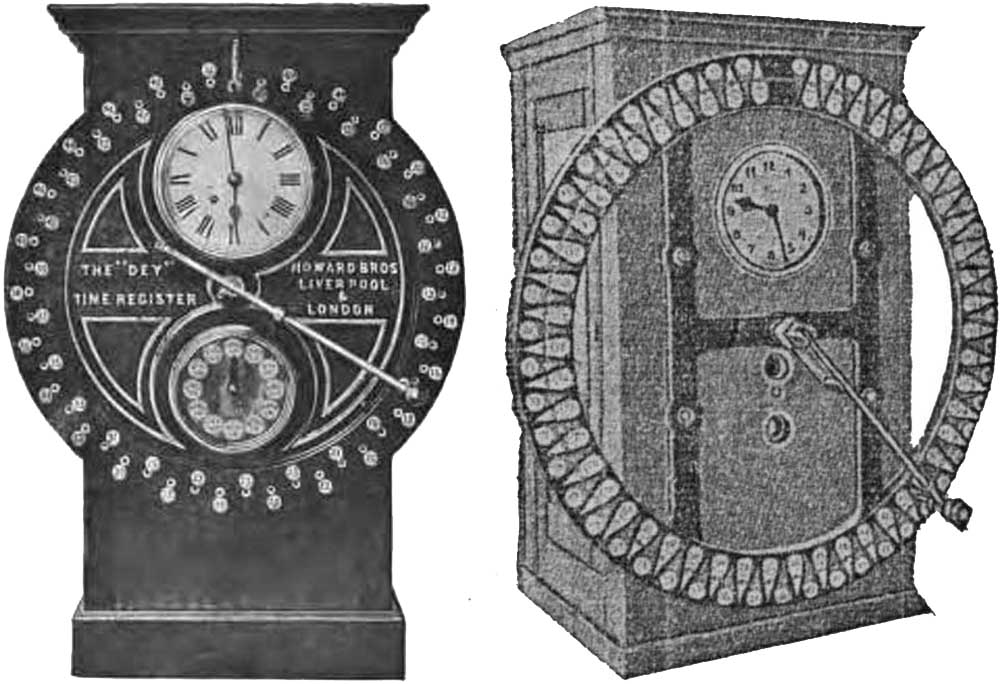

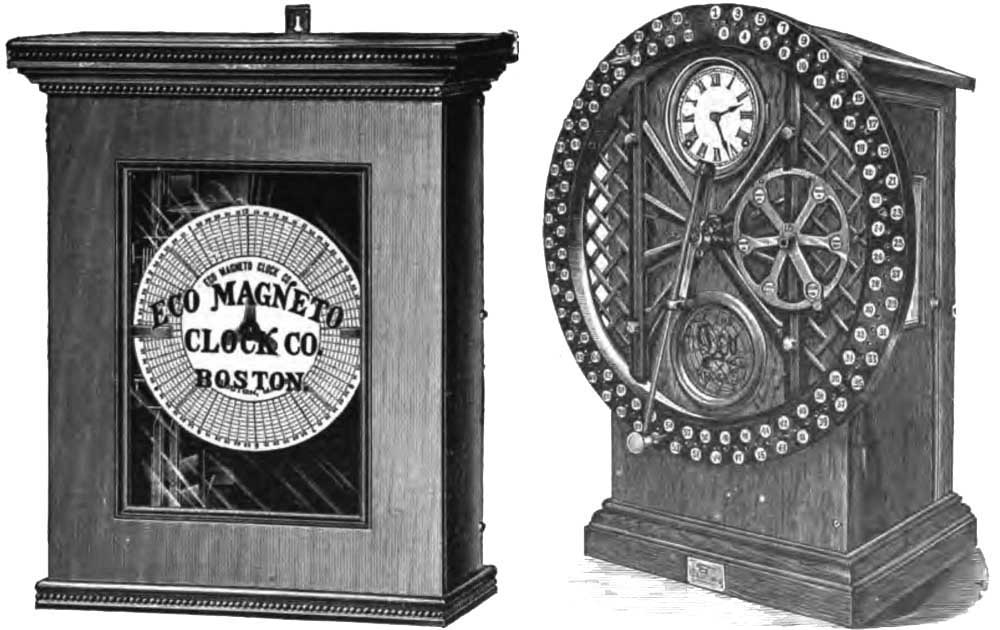
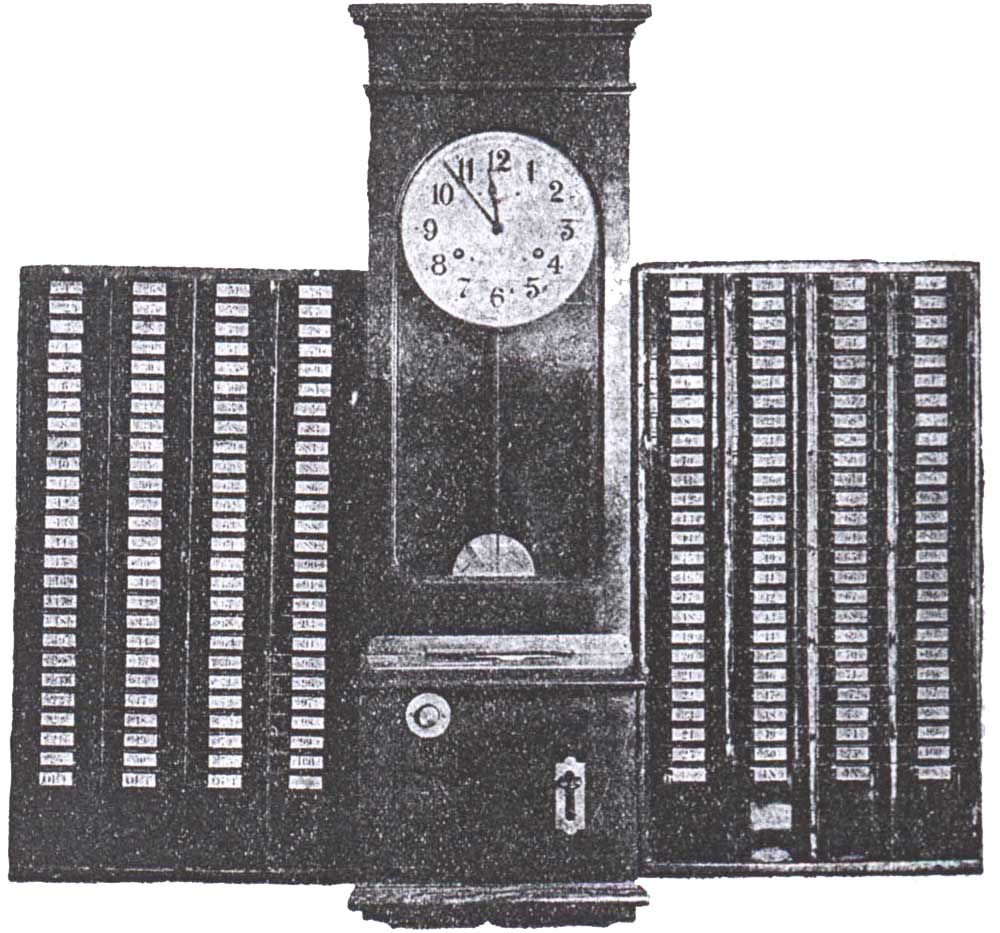
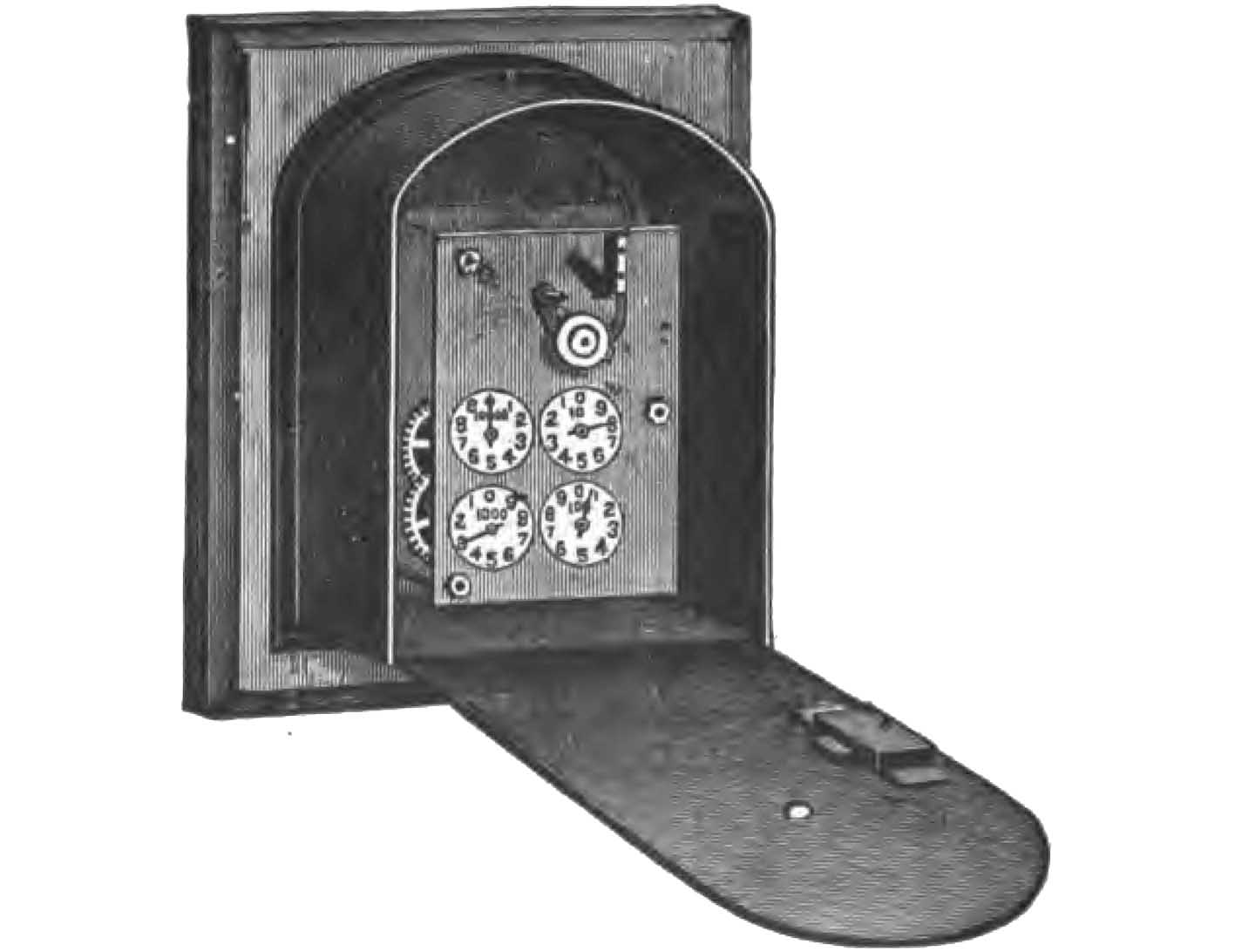
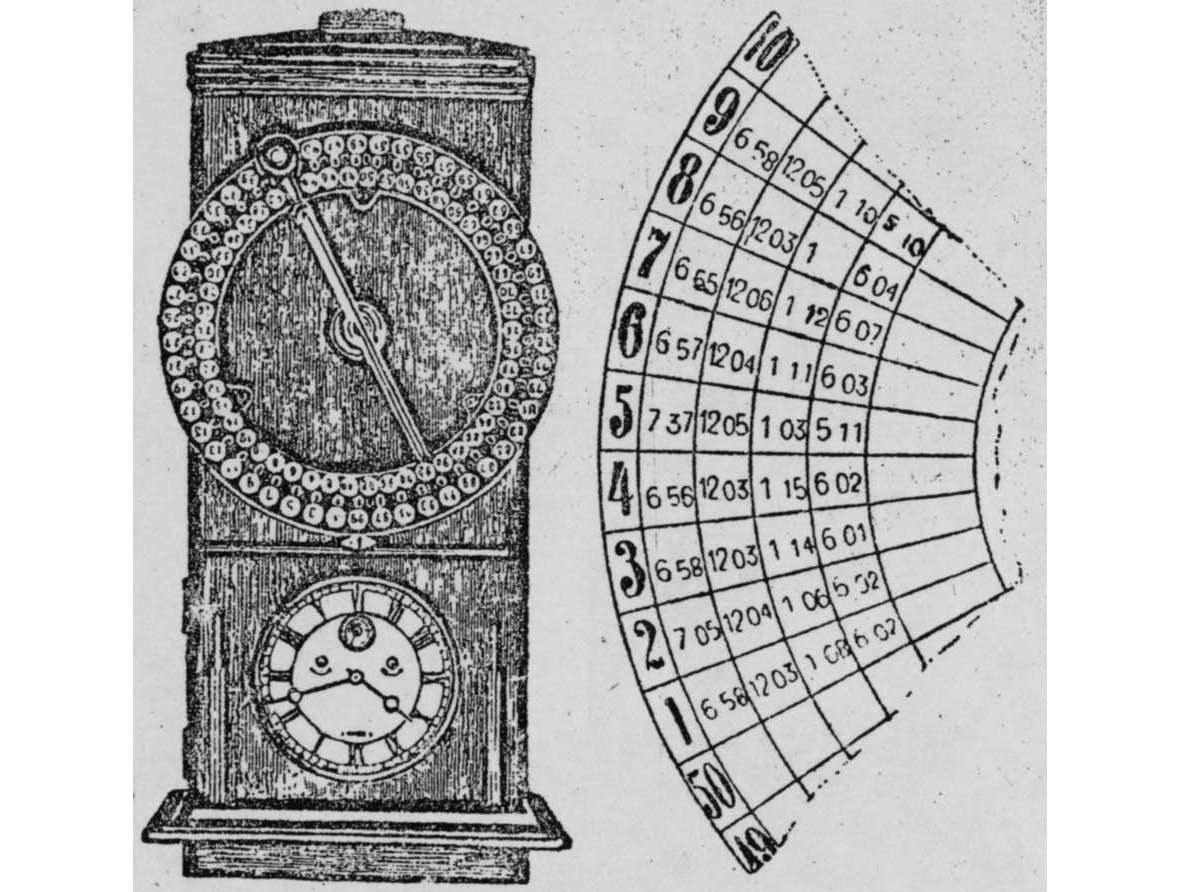
Some models of control watches were not wall, but desktop, in fact they were stamps with a clockwork.
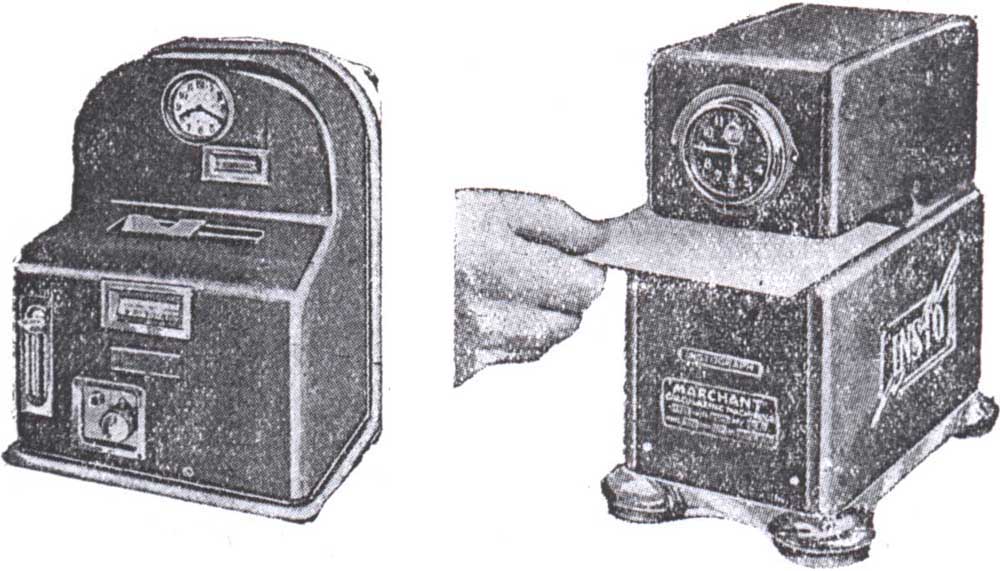
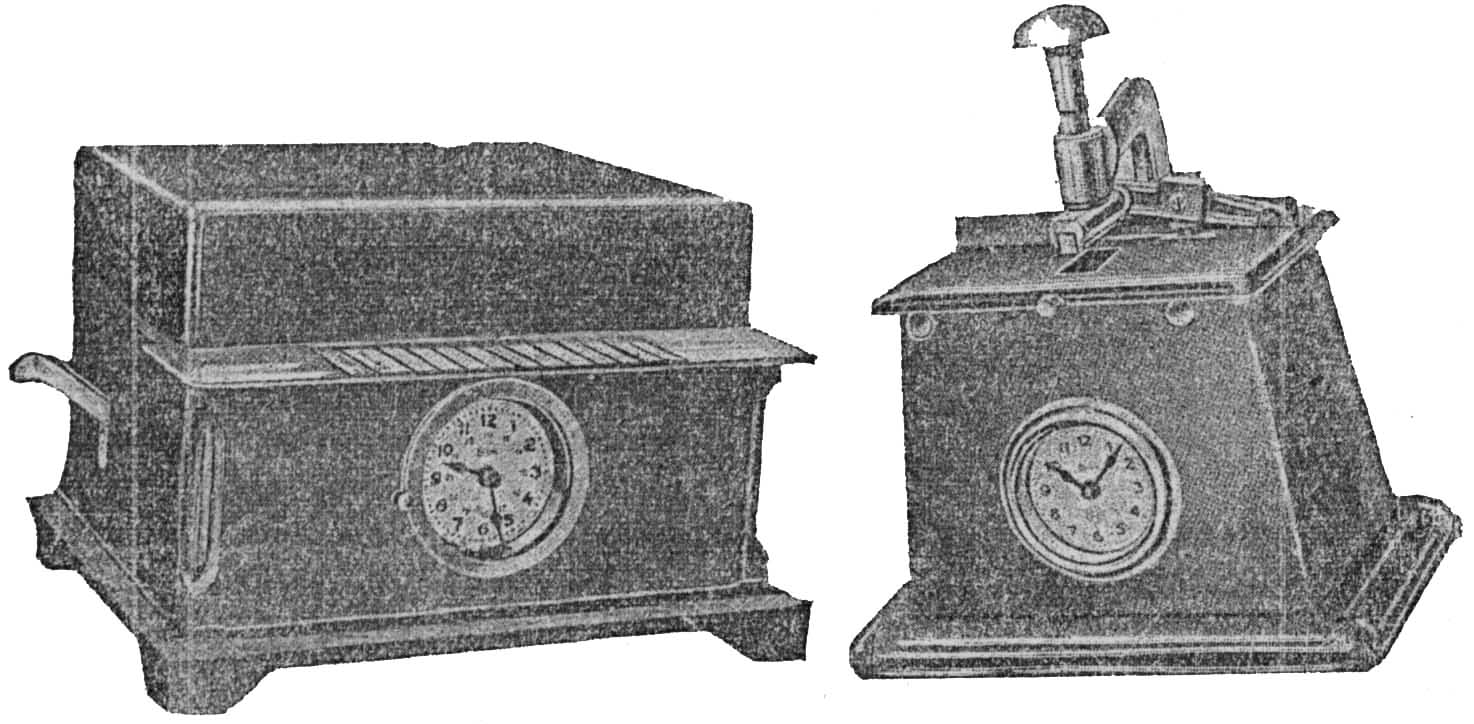
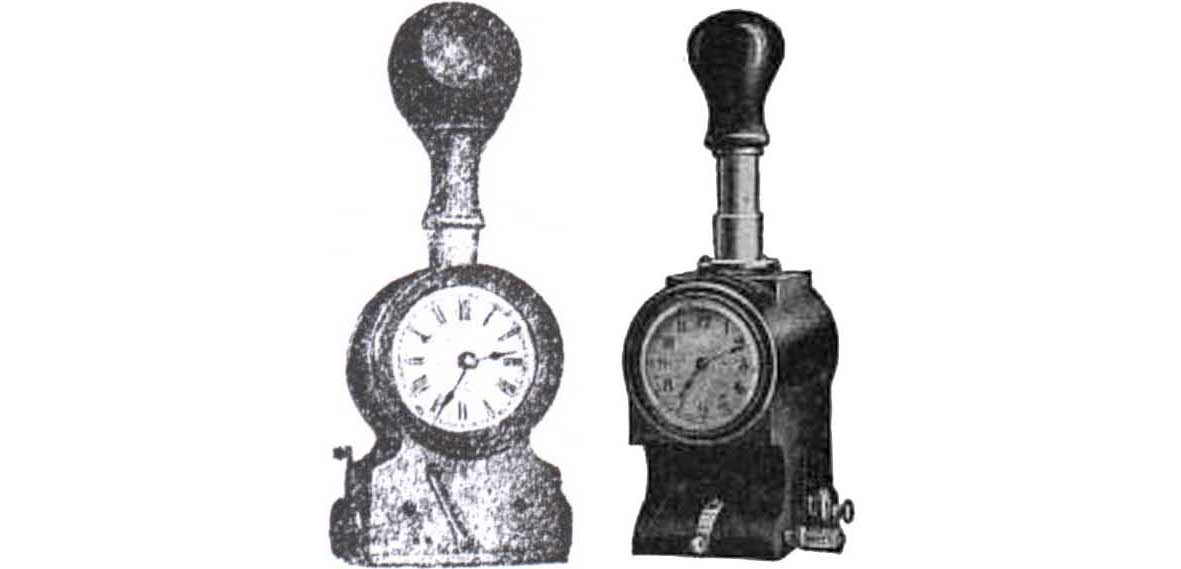

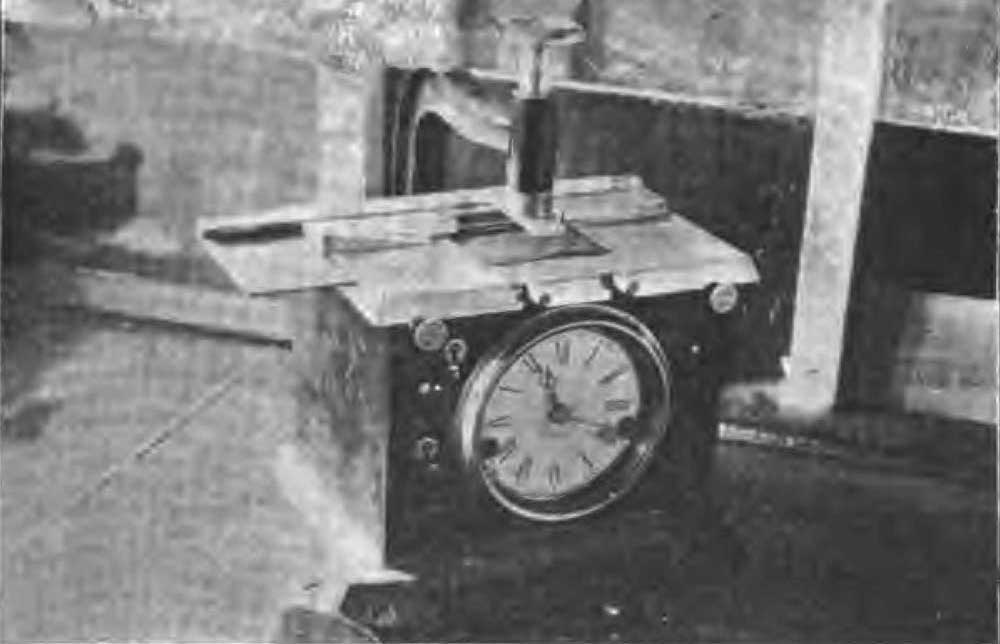
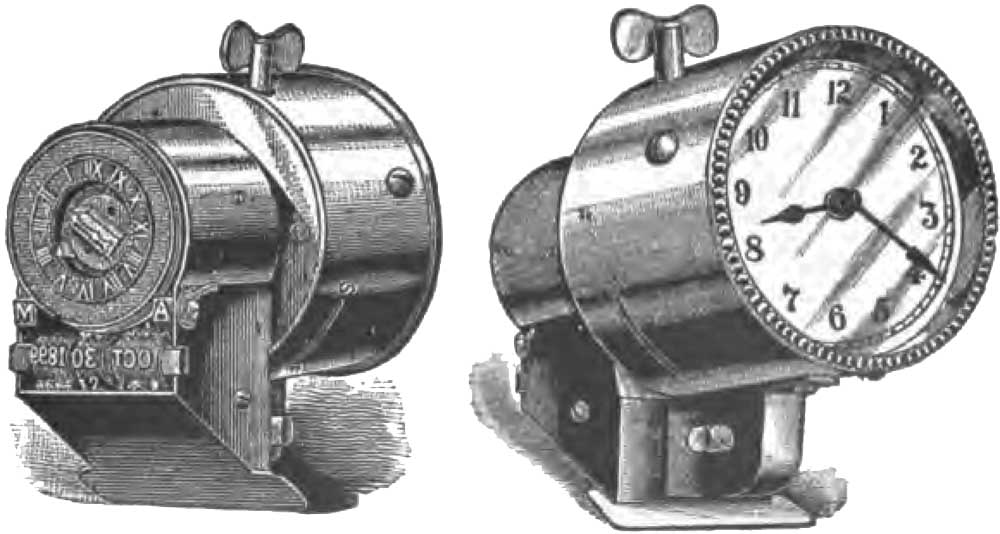
I add that the control hours were used not only for time-keeping at industrial enterprises, but also for solving similar problems at different service points - where it was necessary to mark the time spent by the visitor.
The following are control cards of a foreign sample, which marked the time of a telephone conversation and the time spent in the billiard room.


Now, plastic badges are used instead of time cards (where, of course, time sheets are used, as far as I know), but more often not within the time sheet, but to control the access of employees to a particular room. Although the principle has remained unchanged: automatic control over the intersection of a person with a certain point with the registration of the event in the database.
